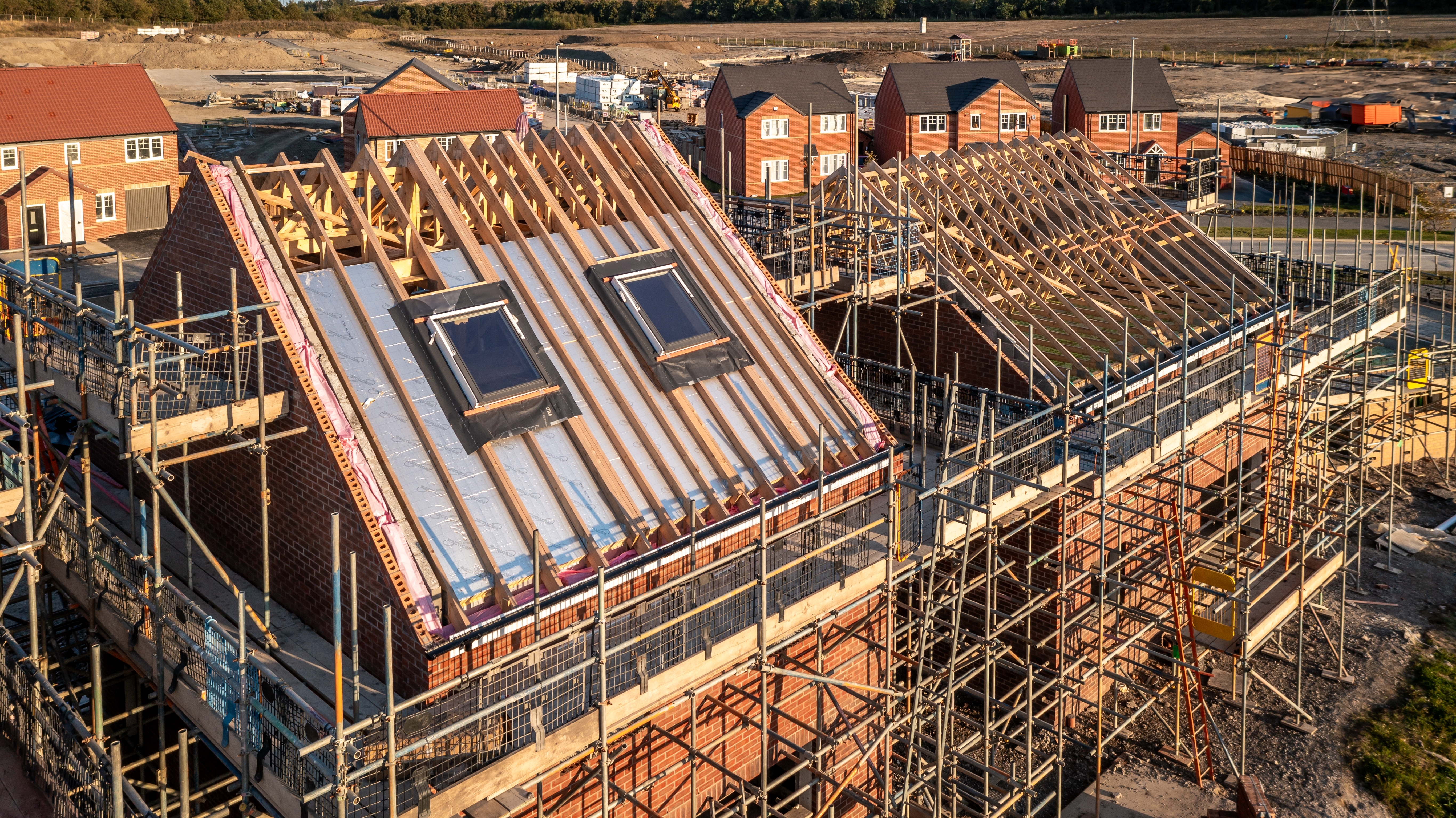UK: Mid-Year Outlook
The UK real estate market enters the second half of 2025 with cautious optimism and a sense of strategic opportunity. Despite global economic shocks, there are signs that the UK’s proactive approach to trade and domestic policy is laying the groundwork for recovery and long-term growth.
Much of this momentum stems from the June spending review, which laid out significant commitments across energy, transport, and business. The review signals a deeper shift in how investment decisions are made, marking a clear acceleration in the devolution of spending power away from Whitehall and towards the UK’s regions. Combined with a generous settlement awarded to the Department for Energy Security and Net Zero, and clear prioritisation of infrastructure and housing, the review will push for renewed investment and interest in the built environment.
While each sector is responding to its own set of challenges, a unifying thread is emerging. Policy support and growing clarity in the economic direction of this government are pointing to new opportunities for developers, investors, and occupiers alike.
From the ongoing recovery in prime retail and new demand for industrial, to the regionalisation of office demand and renewed focus on housing delivery, the UK market is recalibrating. As we look ahead, now is the time to lay the groundwork for sustainable, long-term transformation.

This year has seen the UK economy weather a series of unanticipated global shocks.
These events – principally the introduction of a more stringent than expected tariff regime in the US, and further unrest in the Middle East – have taken a toll on both business and consumer sentiment in the UK, prompting many analysts to cut their GDP growth forecasts for 2025.
This cooling of expectations means investors have been slower to deploy capital this year than we thought would be the case back in January. As a result, we are less optimistic on full-year prospects for the economy than was the case at the start of the year. We are currently forecasting annual GDP growth in 2025 to be 0.7%, down from 1.1% in 2024.
However, while our short-term outlook is for economic indicators to remain volatile, we are more optimistic on the medium- to long-term outlook.
In part, this is because the UK has quickly signed a trade deal with America, which should ease the instability caused by the US tariffs issue. Also, Britain has concluded a trade agreement with India and renegotiated its treaty with the European Union. This in our opinion will lead to smoother commerce between the UK and those major economies going forwards.

James Roberts
Director
Market intelligence
Retail recovery in motion
At the start of the year, we anticipated that UK retail investment volumes could exceed 2024 levels, however, like most other commercial property sectors economic uncertainty has dampened activity. Year to date, volumes are 16% lower than they were during the same period last year. Encouragingly though, there has been a rise in retail park volumes. We are confident that these will continue being an in-demand asset class for investors, underpinned by strong fundamentals such as low vacancy rates, higher returns and attractive yields.
On the occupier front, the outlook is positive for the UK’s prime shopping locations and as we predicted, recovery is well underway across the sector. In prime locations vacancy rates are falling whilst rents are rising. We have forecast retail rents to rise by an average 2.4% over the next five years, which is twice as much as we’ve seen over the last 3 years.
% industrial buildings in England and Wales are currently falling short of the proposed 2030 EPC ‘B’ requirement
The number of visitors to our towns and cities will also keep rising. Footfall across the UK’s major cities has increased by 10% this year to date, and as an increasing number of international visitors return to the UK, combined with a rise in the number of workers returning to the office we are confident this will rise further in the coming years ahead.
For the retail property sector, this means growing demand for well-located, high-quality assets—especially in prime urban areas, prime shopping centres and retail parks. Investors and landlords who can offer flexible, experience-led spaces will be best placed to capture this momentum.

Richard Jones
Director
Retail Sales and Lettings
Retailers are still struggling with rising costs, staffing and operations alone are expected to total over £5.5 billion this year. But there’s another growing concern: cybersecurity. After a string of high-profile cyberattacks that hit both sales and compromised customers’ data, security has shot to the top of the priority list. In response to this, retailers will be enhancing security measures, adding further costs. Insurance premiums alone are said to be rising by 10%, placing additional strain on already narrow profit margins.
But it’s not all doom and gloom. Retail has, and always will be, quick to adapt, and that agility is paying off. The sector continues to lead the way in adopting new tech, from AI and data analytics to robotics now making their way from the back office to the shop floor. These innovations are becoming increasing essential to retailers. They help cut costs, streamline operations, and improve the customer experience. And as the shopping journey evolves, so too will store formats, keeping up with ever-changing consumer demand.
Despite the headwinds, retail’s resilience remains strong. The sector’s ability to innovate and adapt will be key to navigating the challenges ahead. For the property sector, this means continued demand for flexible, tech-enabled retail spaces that can support evolving store formats and operational needs. Stores that can accommodate automation, enhanced security infrastructure, and experiential retail will be particularly well-positioned to attract forward-thinking occupiers.

Shifting gears in industrial
Despite a strong performance at the back end of 2024, UK big-box investment volumes this year have got off to a subdued start, falling short of what we anticipated at the start of the year. But economic uncertainty is not the only driver hindering recovery – a lack of available stock has also impacted momentum.
On the occupier side, activity in Q1 was lower than the same period last year, but the fundamentals in the industrial sector remain solid. Demand is building, particularly from third-party logistics operators and retailers, and with around four million sq. ft of space already under offer, we expect a stronger second half. If current momentum holds, annual take-up could match or even surpass 2024 levels

Looking further ahead, the government’s industrial strategy is set to broaden the occupier base. Sectors like data centres, advanced manufacturing, clean energy, and defence are poised to drive new demand for industrial space, diversifying the market beyond traditional logistics.
Evolving occupier needs means there will be continued demand for the delivery of modern, adaptable, energy-efficient spaces in the right locations.

David Willmer
Principal
Industrial Sales and Leasing
ESG remains firmly embedded in the industrial agenda, with occupiers and developers continuing to integrate advanced technologies to drive sustainability and energy efficiency. While new-build units are typically built to high environmental standards, the real challenge, and opportunity, lies in decarbonising existing stock.
Urban logistics continues to see strong demand, as we expected at the end of 2024, but supply remains constrained. With 85% of industrial buildings in England and Wales currently falling short of the proposed 2030 EPC ‘B’ requirement, retrofitting is no longer optional, it’s essential. Improving the energy performance of these assets could unlock much-needed space while meeting government legislation.
For the property sector, this presents a dual benefit: compliance and value creation. Enhancements such as solar installations, battery storage, electrified heating systems, and broader energy efficiency upgrades are not just ESG box-ticking, they’re value drivers. As occupiers become more selective, assets that meet sustainability benchmarks will command stronger demand and deliver more resilient returns.

Regional offices on the rise
We predicted at the start of the year increasing investor confidence in UK offices boosted by robust levels of occupier demand and a strong rental growth outlook. Whilst investment levels remain below average, a raft of recent announcements from the Government have further cemented the UK regions growth potential, putting it front and centre of their economic growth policy over the next four years. Plans include empowering local economies with greater powers through devolution, infrastructure spending to enhance connectivity, and investment into green energy, R&D and AI, driving job creation.
Furthermore, plans to relocate civil services jobs out of London as part of cost saving and levelling up measures will result in increased demand for office space in regional cities, albeit trickled out over a five-year period. These relocations could spark an increase in development activity, with the majority of cities listed to benefit from newly created roles in the midst of a supply squeeze, particularly of the best quality. Securing a public sector tenant would increase the viability of delivering the scheme, bringing much needed modern and energy efficient space to the UK regions.
We expect Central London to absorb the impact of returned office space over the longer term given falling vacancy rates and subdued development activity, partly due to increasing hard and soft development costs putting pressure on viability of new schemes. Certainly, submarkets with a high concentration of civil service occupiers will see a gradual increase in second hand vacancy albeit this will provide opportunities to redevelop or repurpose inefficient stock prompted by the MEES deadlines.

Paul Broad
Principal and MD, National Offices
Sales and Leasing, Office
As the return to office gathers pace, we expect demand to continue to be focussed on central locations with good transport connectivity and varied amenity provision. Buildings that align with occupier sustainability targets, help attract and retain talent and support culture and collaboration, will remain in high demand. However, as the availability of this product becomes more scarce and total occupational costs continue to increase, priced out occupiers may have to look further afield to fulfil their property requirements.
With the proposed 2030 MEES target fast approaching, a key challenge for the sector will be addressing obsolescence. Developers, keeping in mind elevated build and financing costs, viability, and evolving planning policies, will increasingly focus on refurbishment and retrofit deliveries to keep up with occupier demand. Indeed, this is a trend that continues to build momentum with 42% of deliveries across the UK this year being refurbishments, up on 38% in 2024, and 23% in 2023.
As occupier demand consolidates to high quality central locations, prime office rents in Central London and supply constrained Big Nine cities, will continue to see steady rental growth, cementing in yield stabilisation. Together with further cuts to interest rates expected over the remainder of the year, this underpins the case for increased investor confidence in the sector going forward.

Major policy support will boost Affordable Housing sector activity
A 10 year social rent settlement was announced in the June spending review, that will permit CPI +1% rent increases from 2026. This was a key ask from the sector and will open up borrowing and investment for Registered Providers, reflating their balance sheets. It will also increase the attraction of the sector to For Profit Registered Providers (FPRP’s), with its inflation hedging appeal and security.
The new £39bn Affordable Homes Programme (AHP), over the next 10 years means a greatly increased capital grant programme and demonstrates the importance the government is placing on housing delivery and increasing the number of affordable homes, particularly social rent. It will help open up additional affordable delivery outside of S106, particularly in large partnership schemes, that include a range of tenures.
We expect to see increased activity in the trading of existing Shared Ownership stock to FPRP’s and potentially the transfer of existing Shared Ownership assets to a collectively owned off-balance sheet Registered Provider entity. There is a group of 20 large Registered Providers currently working on proposals to deliver this.
Regional Single Family BTR will account for a greater Living Sector activity
Regional investor demand for low rise rental homes remains strong, alongside tenant demand for newbuild rented homes and an overall lack of supply. The structural undersupply of housing, with housing starts still very low, means that rental growth will continue to perform well in the regions.
The cost and regulatory headwinds constraining the Multi-family market will continue to mean Single Family rental, looks relative attractive with capital more easily deployed and income realised faster. The mainstream housing market outlook is improving but remains subdued – all creating the conditions for bulk deals at scale.

We have seen an increasing number of partnerships and structures created to focus on the delivery of Single Family rental homes and the policy focus on New Towns, urban extensions and large strategic sites are all well suited to the product. It provides fast absorption and placemaking on large new schemes that help support private sale delivered on later phases.
Student Housing
At a national level the UK’s student housing market remains undersupplied, with only a fraction of the required beds to meet the shortfall in the planning pipeline. This well help underpin investor demand for the sector. However, there are very distinct local nuances and understanding the supply and demand picture at a city level is crucial.
Viability will remain a challenge but an improving picture around the cost of finance as interest rates fall will help to boost investor activity. Challenges around forward funding viability mean we expect to see a continuation of the theme of Joint Ventures being a key route to deploying capital. Given the supply and demand picture, we expect occupancy and rental growth to remain strong which will help investor confidence.
Assets with strong sustainability credentials, in good locations that meet safety regulations will remain fiercely competitive. There will be opportunities for more active investors to add value through asset management strategies.

Helen Collins
Principal and Managing Director
Birmingham
